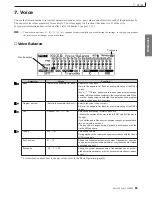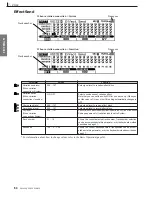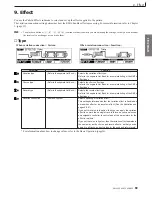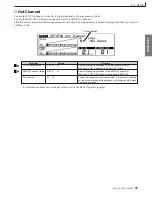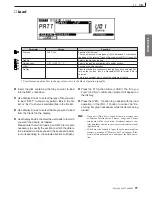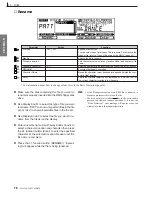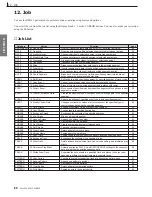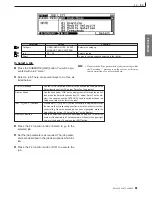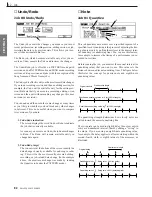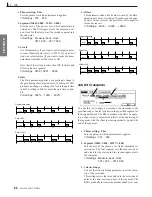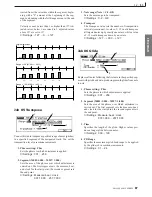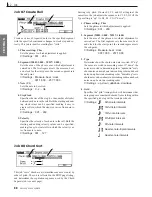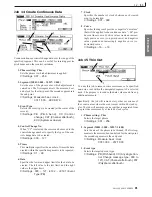
RM1x SEQUENCE REMIXER
77
PA
TTERN MODE
❏
Load
1
Insert the disk containing the file you want to load
into the RM1x disk drive.
2
Use Display Knob 1 to select the type of file you want
to load: “PATT” to show only pattern files in the file
list, or “ALL” to show all available files in the file list.
3
Use Display Knob 2 to select the file you want to load
from the file list on the display.
4
Use Display Knob 4 to select the user pattern to which
you want the data to be loaded.
Please note that when loading an SMF file it is also
necessary to specify the section to which the data is
to be loaded via the keyboard (the keyboard indica-
tor corresponding to the selected section will flash).
11. Disk
Parameter
Values
Function
File type
PATT, ALL
Specifies the file type.
You can select one of two types of file to be loaded. For details on
the types of file, refer to “Types of file used by the RM1x.” (page 43)
Disk file
Selects the file to be loaded.
Style/section
U01 ... U50 / A ... P
Selects the loading destination style and/or section.
LOAD!
-
Executes the load operation.
PrePlay
-
Plays the file before you execute loading if you have selected Pat-
tern as the file type, and if a Standard MIDI File format 0 file is
selected.
This is a convenient way to check the contents of the file.
5
Press the F1 function button (LOAD!). The “Are you
sure? (Yes/No)” confirmation prompt will appear on
the display.
6
Press the [YES + 1] button to go ahead with the load
operation, or the [NO - 1] button to cancel. An “Ex-
ecuting” bar graph will appear while the data is being
loaded.
n
• When an All Data file is loaded, all data in memory such
as Patterns, Pattern chains, Phrases, Songs, and System
setup data will be overwritten. If internal memory con-
tains data that you wish to save, save it to disk before load-
ing other data.
• If the data to be loaded is larger than the remaining free
memory, a message of “Memory Full” will appear. If this
occurs, delete unneeded data and repeat the Load opera-
tion.
* For information about how to change values, refer to the Basic Operation (page26).

